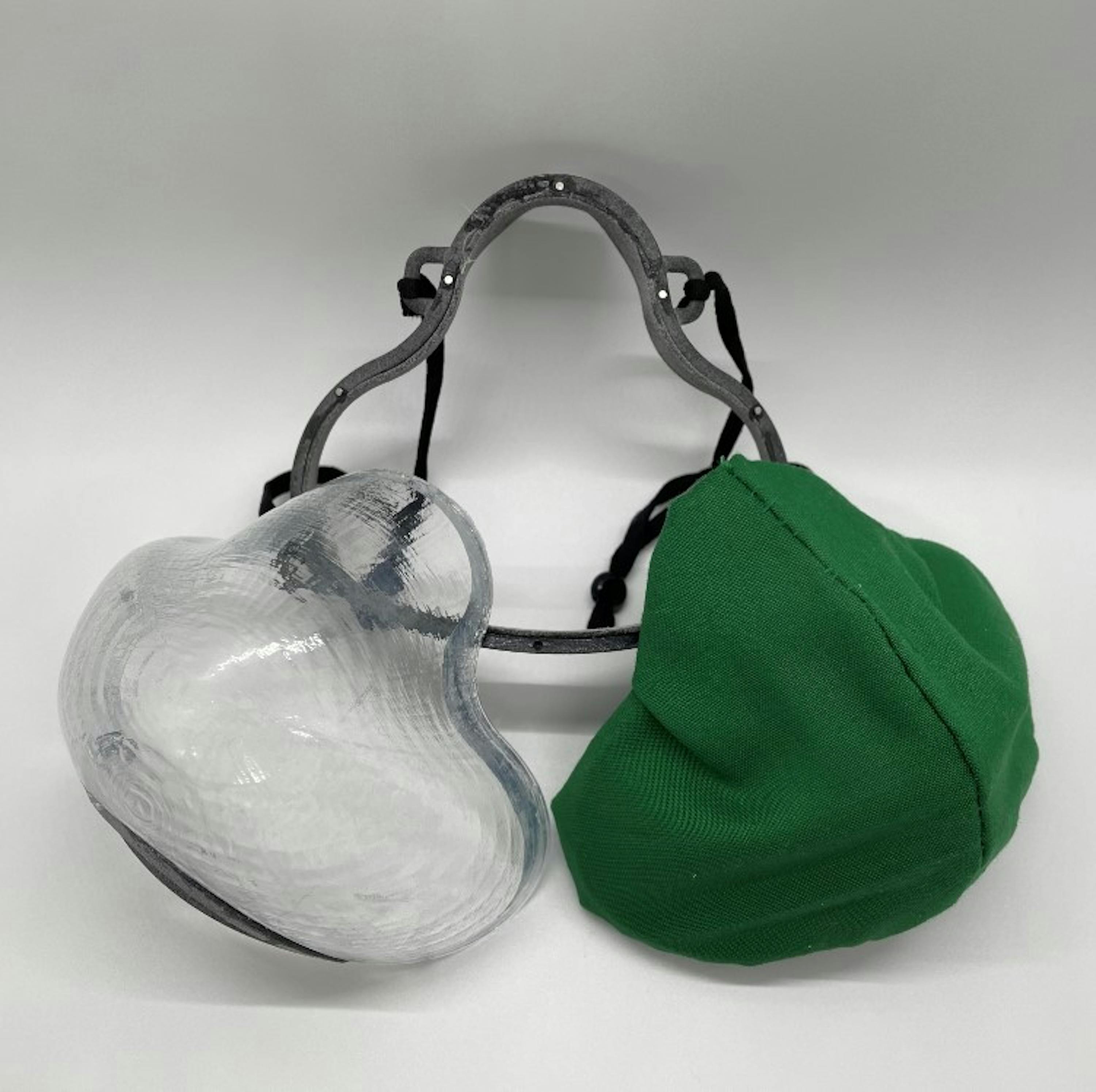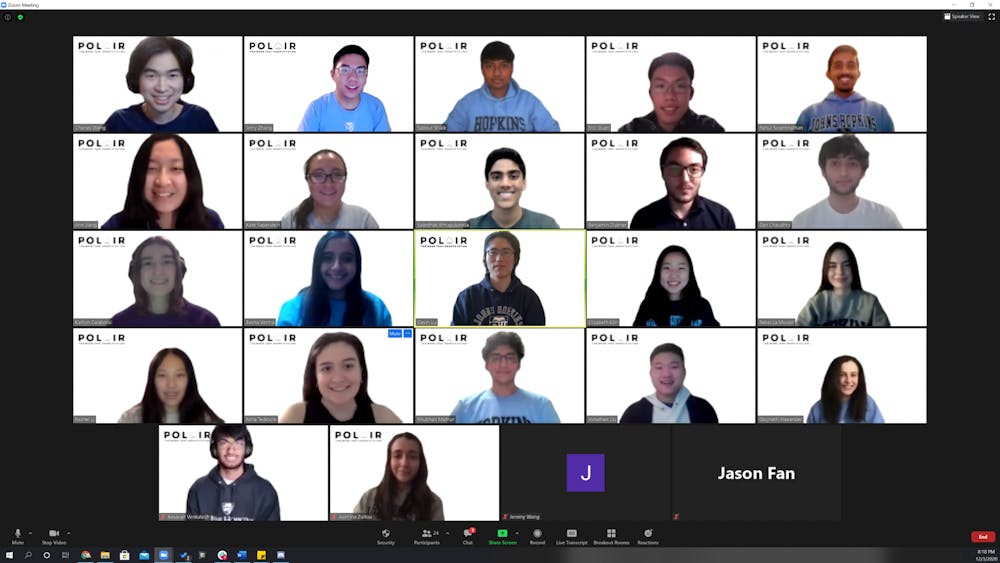Team Polair, a Hopkins team of 24 Biomedical Engineering (BME) undergraduates, has developed a clear, adaptable face mask for the XPRIZE Next-Gen Mask Challenge. The team is among five finalists in the global competition.
The News-Letter interviewed four members of Team Polair: sophomores Jerry Zhang, Benjamin Dubner, Rachel Li and freshman Gwyneth Alexander.
The project started in July 2020 after Zhang took an engineering summer class called Culture of the Engineering Profession.
“We got exposed to engineering challenges in real time and learned about the XPRIZE competition,” Zhang said. “So, I thought it was pretty cool and even after the class ended, I wanted to continue.”
Zhang then sent an email out to the BME department and many students expressed interested in working on the project. Dubner was already friends with Zhang and was eager to do this work after being unable to test his own idea for a mask at a virtual hackathon.
“My mask idea at the hackathon didn't pan out very well,” Dubner said. “It was kind of unfortunate, but when I saw this opportunity, I thought, ‘Oh, that's a great, great opportunity to kind of continue on with that.’”
Li gave a similar reasoning for her interest. She was eager to find solutions for problems that she encountered in current mask models.
“I saw [Zhang’s] email while I was at home thinking of ways I could still be engaged,” she said. “I felt that there were a lot of issues with current masks and I thought this would be a quick way to make an impact.”
Alexander commented that the community of the team served as her introduction to Hopkins.
“It was good to have some guidance from older students and experience the Hopkins community before school even started,” she said.
The team members also discussed their prototyping process, along with some of the challenges they faced working in a virtual environment. Their first step was to consider the 12 criteria that XPRIZE gave participating teams. The criteria were compiled from survey results which asked respondents to list problems with current masks. Among the top responses were that masks are too hot, they fog glasses and they make it difficult to breathe.
“We considered which [requirements] were valid or invalid and which we could combine,” Zhang said. “From that, we had our design requirements and an idea of what we wanted to address.”
From that starting point, the team discovered three items that could address all the issues: a good frame, a flexible skeleton to keep the mask away from the wearer’s face and prevent heat buildup and a clear mask material to allow for better communication. These ideas formed the bases of projects which each subteam pursued.
Once the team developed an initial design of the device using a Computer-aided design model and a simple prototype, they began working with manufacturers.
“Because we weren’t on campus, we didn't have access to the resources that we normally would have,” Alexander explained. “So, we did a survey and figured out some resources that we had at home.”
Zhang, for example, has a 3D printer. So the team made some of the initial prototypes using the 3D printer. They also enlisted the help from an arm of the Whiting School of Engineering (WSE), WSE Manufacturing. In particular, they relied on the help of the director of WSE Manufacturing, Rich Middlestadt, and design consultant, Niel Leon. Middlestadt and Leon helped improve the team’s initial prototypes.

Later, the team began working with Honeywell to iterate their initial design and produce 45 copies of their mask.
On Nov. 10, the team advanced to the top 10 of the competition. Advancing to the subsequent round involved a round of laboratory testing, public voting and evaluation by several “cultural ambassadors,” including Tony Hawk and Bailee Madison.
Last week, the team advanced to the top five and participated in a 15-minute question and answer session with industry leaders in order to secure their final placement, which will be available to the public around Dec. 15.
Should the team take home first prize, they will receive $250,000 upfront and another $250,000 after they secure a manufacturing contract. In the meantime, the team is already preparing for the provisional patent process that would hopefully prepare them to begin manufacturing by the summer of 2021.
While the team is uncertain if masks will have a constant level of demand, Alexander is excited to keep learning about how the design could help people who need to wear masks based on where they live or work. She made it clear that the team’s work will continue to make an impact even after the COVID-19 pandemic has subsided.
“Medical profession will always need masks. Carpenters and industrial workers also wear masks to protect from particles,” she said. “Another future use we’ve been talking about was wearing masks for smog-related pollution and forest fires, as those are increasingly common.”
In addition, Dubner spoke to the team’s hopes of improving the design in future prototypes with future innovations.
“One of the great parts of our design, being modular, it kind of really future-proofs [it],” he explained. “Our masks can adapt to [innovation] really well because so many of these components are easily swappable or interchangeable.”
As technologies advance, the team hopes that the masks could eventually be used to detect carbon dioxide levels, air flow or even COVID-19 (if a breath-based test were developed). In addition, the team can easily incorporate new filters into the mask design as they become more breathable, effective and sustainable.
Trisha Parayil contributed reporting.





